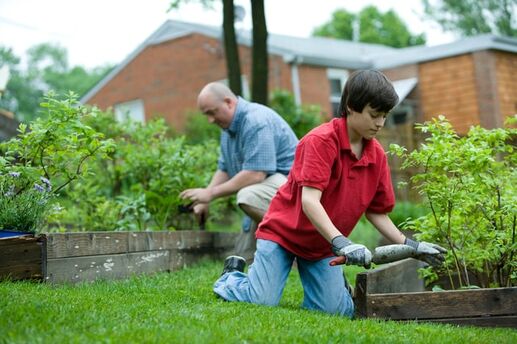4 Amazing Staycation Ideas You’ve Never Thought of
Need a vacation but don’t have the time or funds? No problem! With a little legwork and creativity, you can plan an escape right in your own home or backyard. You’ll create happy memories for the whole family without the hassle of packing a single suitcase. Consider these innovative ideas.
1. Host a spa day.
You don’t have to spend hundreds of dollars to unwind. Recreate that tranquil environment in your own home: First, declare the day tech-free and turn off all televisions, computers and cell phones. To add spa-like touches, fill pitchers with water, cucumber slices and mint leaves, playing a peaceful soundtrack, such as the “Spa Suite” channel on Pandora.
Then schedule “treatments” with your kids: Set up a manicure station where they can paint their nails (don’t forget to keep tissues on hand in case of smudges) and a
makeover area where they can experiment with makeup. You can also apply facial masks or draw aromatherapy baths.
Extra splurge: Invest in plush robes to wear all day, or contact a local spa for a masseuse or manicurist that makes house calls for an at-home treatment.
2. Go camping!
Set up a tent in your backyard for a campout. During the day, go on a hike at a local park or nature preserve, complete with trail mix. In the evening, gather around the campfire to roast hot dogs and make s’mores while telling ghost stories.
Extra splurge: To make the experience more comfy, use an air mattress inside the tent. You can also spark your child’s interest in nature with a guide to flowers or small camping kit.
3. Create a backyard waterpark.
Waterparks are classic summer fun, but they’re often expensive or too far away. Set up your own version in your backyard: Fill up a few inflatable pools with water, and get some water guns and water balloons. Then invite your kids’ friends over to play. They’ll spend hours splashing around with the toys.
Extra splurge: Create a healthier version of the concession stand by setting up a table full of drinks, fruit slices and other healthy snacks. Finish the evening with a barbecue or pizza party.
4. Have a luxury vacation (on a budget!).
For a fun spin on a big-city vacation, plan a day full of cultural adventures. Print out an itinerary of the day’s events for your family: Start with a breakfast of croissants at a local park. Then check out a new, unusual museum or cultural sight in the area that your family hasn’t yet visited. Follow that with a meal and dessert at one of the fancier restaurants in town, or serve up dinner at a table decorated with candles and fresh flowers in the backyard. Then finish the evening with a classic New York-centric movie, such as Breakfast at Tiffany’s. For a luxurious touch, place a gourmet chocolate on everyone’s pillow to find at bedtime.
Extra splurge: Give each child a certain amount and let them pick out a souvenir throughout the day. It will serve as a token of their fun family staycation!
Photo by Josh Hild on Unsplash
Like this article? Get more by following us on Facebook at Beauty & Confidence.






